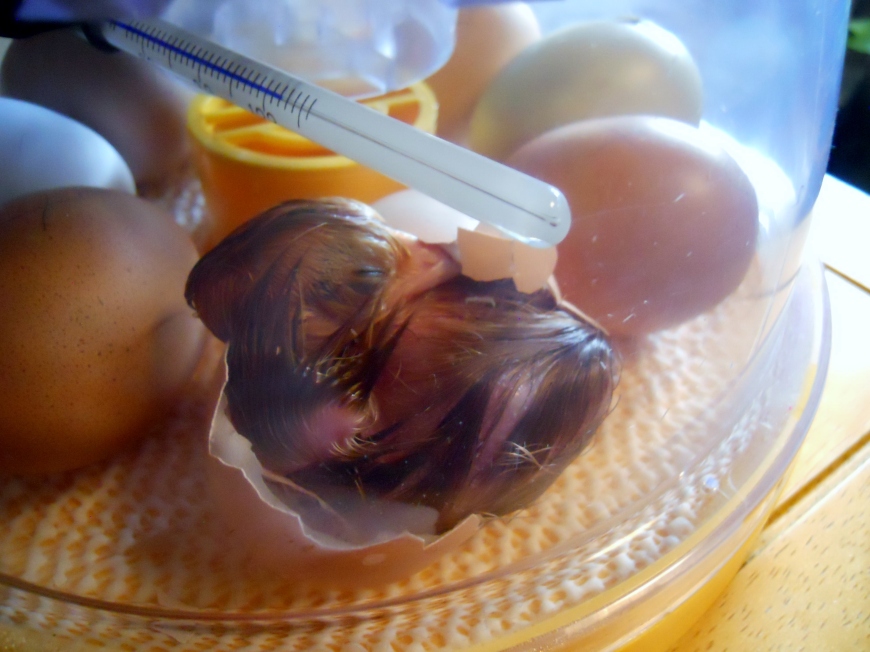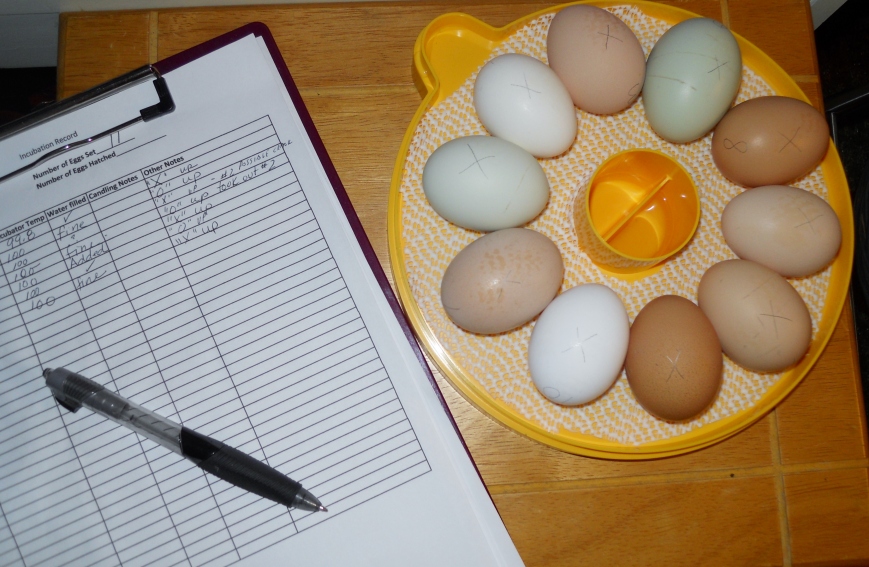Well, our bumbling first-time attempt at incubating eggs has just about come to a close. We still have two eggs in the incubator that look to still be viable, so we are giving them another day before we “call the hatch.” While we had hoped for a higher hatch rate (we are currently at 30%), we knew there were risks: ordering hatching eggs to be delivered via U.S. post, our electricity went out for 8 hours, and using our incubator for the first-time. Not to mention, our own beginner’s jitters. Still, we hatched three healthy, spunky chicks!
The first pip was on Monday night, the night of day 20 and Baby #1 was born about 18 hours later, at mid-day on Day 21. We could hear more cheeps coming from the eggs and on Wednesday morning we had two more pips. These two chicks hatched fairly quickly and both were out of the shells by mid-morning.
This chick got herself unzipped in just about an hour of steady work. We sipped our early morning coffee (it was about 6:30 am) and watched as she worked her way around the shell. Our visibility was good for hatch #2.
While Kori had to go to work, Teri was able to watch and report on Hatch #3–this was an Easter Egger/Ameraucana egg and we were so hoping at least one of the two we incubated would hatch.
This chick took a few moments to rest, all curled up in the remaining shell, before completing the hatch. It gave us a chance to see how chicks position themselves for hatching. While we’d seen this in books, it is always amazing to see the real thing happening in real life!
She finally pushed her way out into the world and flopped out all soppy wet. She only rested for a few minutes, however, before she started making her way around the incubator in an awkward scootch.
And here we have the three newest additions at Raggedy Hen Farm! We may be adding a few more to round out this spring’s babies, and we have learned a ton from our first incubating adventure. Welcome chicks!
If you’d like to watch the video of the first egg hatching, you can find it on our Youtube channel!














